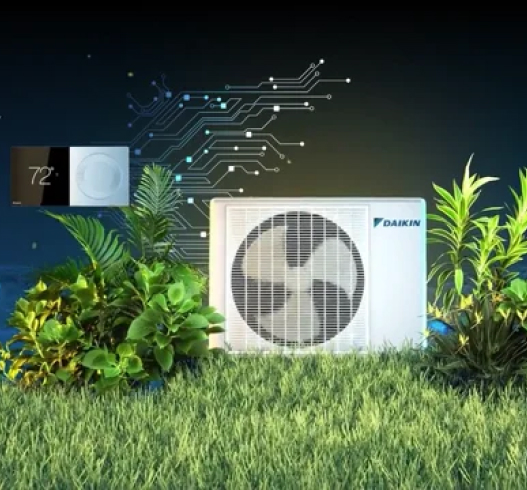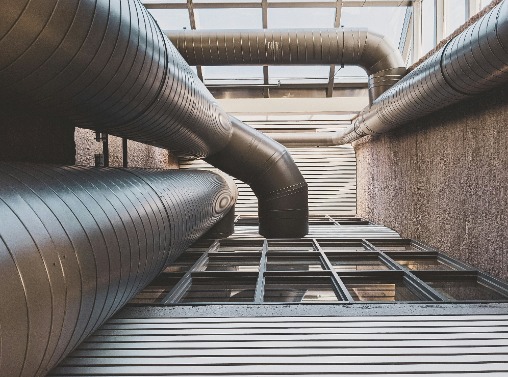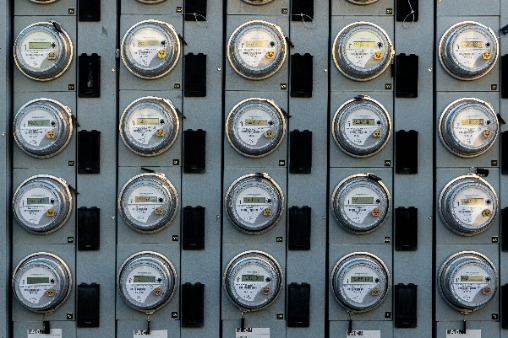The Next Generation of Refrigerants: What is R-32; Why is it Replacing R-410A?

Refrigerant is the lifeblood of indoor comfort systems. It makes conditioned air possible, carrying away heat to allow cool air to comfort us inside homes and buildings in the summer or transferring heat energy indoors to warm our spaces in the winter. But, previous refrigerants, used so effectively to cool and heat our interior spaces, have a higher global warming potential (GWP) than R-32.1

Currently, the refrigerant commonly found in most North American air conditioning systems is called R-410A, and its predecessor was R-22. These widely used refrigerants have what scientists have determined to be high ‘Global Warming Potential’ or high GWP.
That’s why many in the heating, ventilation, and air conditioning (HVAC) industry are excited about R-32, a next-generation refrigerant remarkable for reducing air conditioning's impact (compared to high global warming potential refrigerant) while at the same time transferring heat efficiently. For example, the Daikin ATMOSPHERA with R-32 has up to 12% more cooling efficiency and up to 18% more heating efficiency than comparable R-410A LV Series systems.
Compared to today’s widely used refrigerants in North America, R-32 has around one-third of the GWP. Plus, this pure, unblended refrigerant allows cooling and heating efficiencies that can help reduce energy consumption compared to similar R-410A products. Due to its single-component, pure nature, it is also easy to reuse, reclaim, and recycle off-site with a simple cleaning process, particularly compared to blends with HFOs that are typically reclaimed by being distilled to their base components and then remixed.**
**Recycling as used herein is in relation to refrigerant recycling which is, in part, governed by 40 C.F.R. Part 82, Subpart F. R-32 is not a “drop-in” replacement for R-410A, and should not be used in equipment that is not specifically designed to use R-32. Before purchasing an appliance, read important information about its estimated annual energy consumption, yearly operating cost, or energy efficiency rating that is available from your retailer.
With roughly 2 billion air conditioning units in the world1 – and nearly 5 billion forecasted by 20502 – a low global warming potential refrigerant could provide meaningful advantages.
What Are Greenhouse Gases?
R-32 and its predecessor R-410A are hydrofluorocarbons, human-made synthetic gases used in air conditioning systems, refrigeration, fire suppressants, building insulation, and aerosols. When refrigerants and other hydrofluorocarbons leak into the atmosphere, they can contribute to the greenhouse effect, a phenomenon that traps warm air in the atmosphere.
Earth’s atmosphere has always had low levels of naturally occurring greenhouse gases. However, according to the United States Environmental Protection Agency (EPA), concentrations of carbon dioxide (CO2), methane (CH4), and nitrous oxide (NO2) have grown substantially since the Industrial Revolution began in the 1700s.
Indoor comfort systems that burn fuel oil, propane, or other fossil fuels to create heat release CO2 into the atmosphere. Burning fossil fuels and other agricultural activities, such as cutting down forests, add greenhouse gases to our atmosphere.3
Over time, oceans, forests, vegetation, and atmospheric chemical reactions may help remove greenhouse gases to create a beautiful balance. But with industrialization, greenhouse gases are now filling the atmosphere faster than they can be removed, tipping the equilibrium toward a warming earth.4
Why Efficiency and R-32 is Important
Conditioning indoor air takes energy. Inefficient systems, such as lower SEER2 (Seasonal Energy Efficiency Ratio) cooling systems or electric resistance baseboard heaters, may consume more energy to keep a space comfortable than more efficient systems and those with inverter technology.
This is important to understand since only a small percentage of homes in developing countries such as India, Mexico, South Africa, and Indonesia now have air conditioners. According to the International Energy Agency (IEA), by 2030, the electricity demand for space cooling in buildings could increase by 40% since 2000.5
That’s where R-32 comes in. This next-generation, low-GWP refrigerant transfers heat efficiently and has excellent thermodynamic performance, with about 10% more thermal capacity than R-410A.
Considering refrigerant emissions plus indirect emissions from generating energy – if all the air conditioning units using the current refrigerants, R-410A and R-22, were converted to R-32, the CO2 equivalent of approximately 800 million tons, or 19%, could be reduced in 10 years.6
Like R-410A, R-32 features an ozone depletion potential of zero.7 The ozone layer protects the earth from the sun’s strong rays, keeping our planet’s temperature balanced while absorbing a portion of UVB – ultraviolet radiation that’s been linked to skin cancers, cataracts, skin aging, and harm to some crops and marine life.8
A Holistic View of R-32
The ‘total life cycle refrigerant impact’ measures the direct emissions from refrigerant plus the indirect emissions from electricity consumption.
Emissions come from direct sources, like refrigerant leaking into the atmosphere, and indirect sources, including the energy an air-conditioning unit consumes when running. That’s vital because without improvements in energy efficiency, by 2050, “around 2/3 of the world’s households could have an air conditioner. China, India, and Indonesia will together account for half of the total number,” according to the IEA.9
To top things off, R-32 is a pure, single-component refrigerant, making it easy to reuse, reclaim, and recycle.
Is R-32 Proven?
Since 2012, R-32 has been used to condition indoor air in over 280 million units in more than 130 countries and regions worldwide. As more and more people demand indoor comfort, transitioning to R-32 is designed to be a low GWP refrigerant while delivering the performance and energy efficiencies needed to cool our homes and buildings.

1, 5 IEA,” Space Cooling,” https://www.iea.org/energy-system/buildings/space-cooling
2 MIT Climate Portal, “Heating and Cooling,” https://climate.mit.edu/explainers/heating-and-cooling
3 EPA, “Climate Change Indicators: Atmospheric Concentrations of Greenhouse Gases,” https://www.epa.gov/climate-indicators/climate-change-indicators-atmospheric-concentrations-greenhouse-gases
4 EPA, Sources of Greenhouse Gas Emissions https://www.epa.gov/ghgemissions/sources-greenhouse-gas-emissions#land-use-and-forestry
6 Daikin, HFC32, https://www.daikin.com/csr/information/influence/hfc32
7 Daikin, What is R-32? https://www.daikin.com/air/daikin_techknowledge/benefits/r-32
8 EPA, “Basic Ozone Layer Science,” https://www.epa.gov/ozone-layer-protection/basic-ozone-layer-science
9 IEA, “The Future of Cooling,” https://www.iea.org/reports/the-future-of-cooling
In this article
Connect on Social Media
 Follow on Facebook
Follow on Facebook
 Follow on YouTube
Follow on YouTube
 Follow on Instagram
Follow on Instagram
 Follow on X
Follow on X
 Follow on TikTok
Follow on TikTok
 Follow on Pinterest
Follow on Pinterest

Looking for help now?
Enter your zip code to search for Daikin Contractors in your area.
Learn More
Learning Center Content
Stay informed about home comfort technology, when to upgrade, energy efficiency, and reducing your energy bills.





























